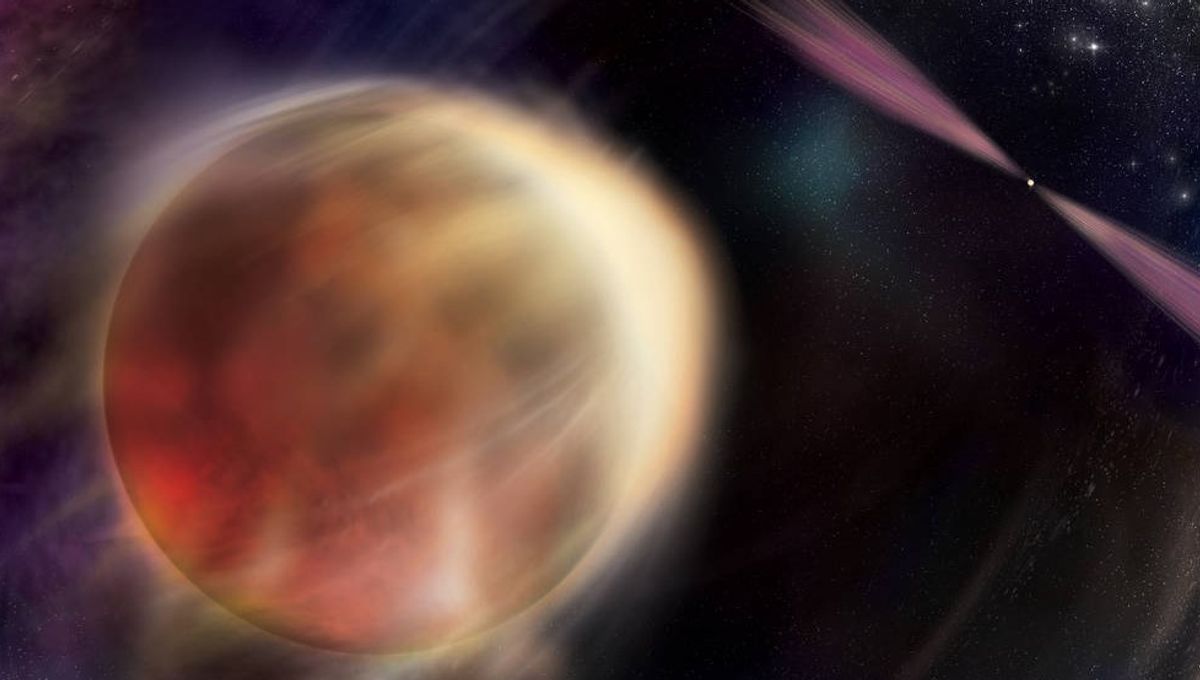
Astronomers have known of “spider” star systems for a while. In these systems, a star is being slowly eroded by its companion: a pulsar. Pulsars are the extremely dense and quickly spinning remains of stars after going supernova; they release a lot of radiation, and it is that radiation that kills the partner. Some of the partners pass in front of the star, eclipsing it from view, and astronomers have for the first time seen these eclipses in gamma rays.
An international team of astronomers has discovered seven such eclipses in these systems. And in studying the events, they can work out the orbital parameters of the system and from there work out the properties of the pulsar.
“One of the most important goals for studying spiders is to try to measure the masses of the pulsars,” lead author Colin Clark, from the Max Planck Institute for Gravitational Physics in Hannover, Germany, said in a statement. “Pulsars are basically balls of the densest matter we can measure. The maximum mass they can reach constrains the physics within these extreme environments, which can’t be replicated on Earth.”
The names of these systems come from two species of spiders whose females can sometimes snack on their smaller mates: black widows and redbacks. The pulsars in these systems have evolved faster than their companions and siphoned away some of their material, before blasting them with particle outflows and radiation. Black widows have companions that have less than five percent of the mass of the Sun. Redbacks have bigger companions, that can have 10 percent to half the mass of our Sun.
The team used data from NASA’s Fermi Gamma-ray Space Telescope to look for eclipses and determine the orbital parameters. Gamma-ray telescopes often collect just a handful of photons from a source. Researchers discovered that pulsar PSR B1957+20, or B1957 for short, was missing 15 photons over a decade of observations.
From that, they were able to estimate the inclination between B1957 and its companion, and discovered that the pulsar is 1.8 times the mass of the Sun. This is a very important result because, using just visible light, B1957 was believed to be one of the heaviest known pulsars, right at the edge of where a pulsar would collapse into a black hole. Others, too, have been tipped to be as heavy.
“There’s a quest to find massive pulsars, and these spider systems are thought to be one of the best ways to find them,” said Matthew Kerr, a co-author on the new paper and research physicist at the U.S. Naval Research Laboratory in Washington. “They’ve undergone a very extreme process of mass transfer from the companion star to the pulsar. Once we really get these models fine-tuned, we’ll know for sure whether these spider systems are more massive than the rest of the pulsar population.”
The study is published in Nature Astronomy.
Source Link: Gamma-Ray Eclipses Have Been Spotted For The First Time